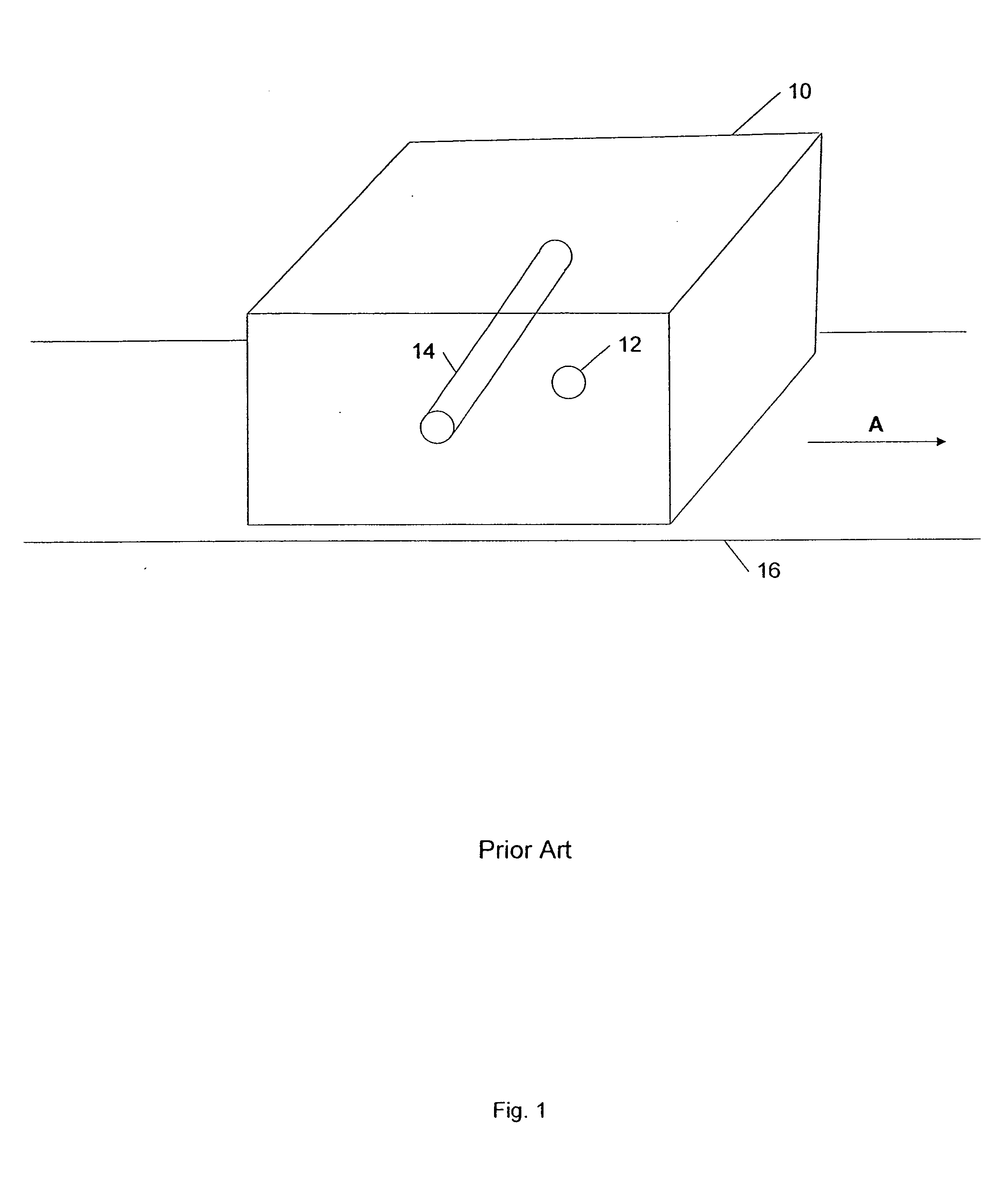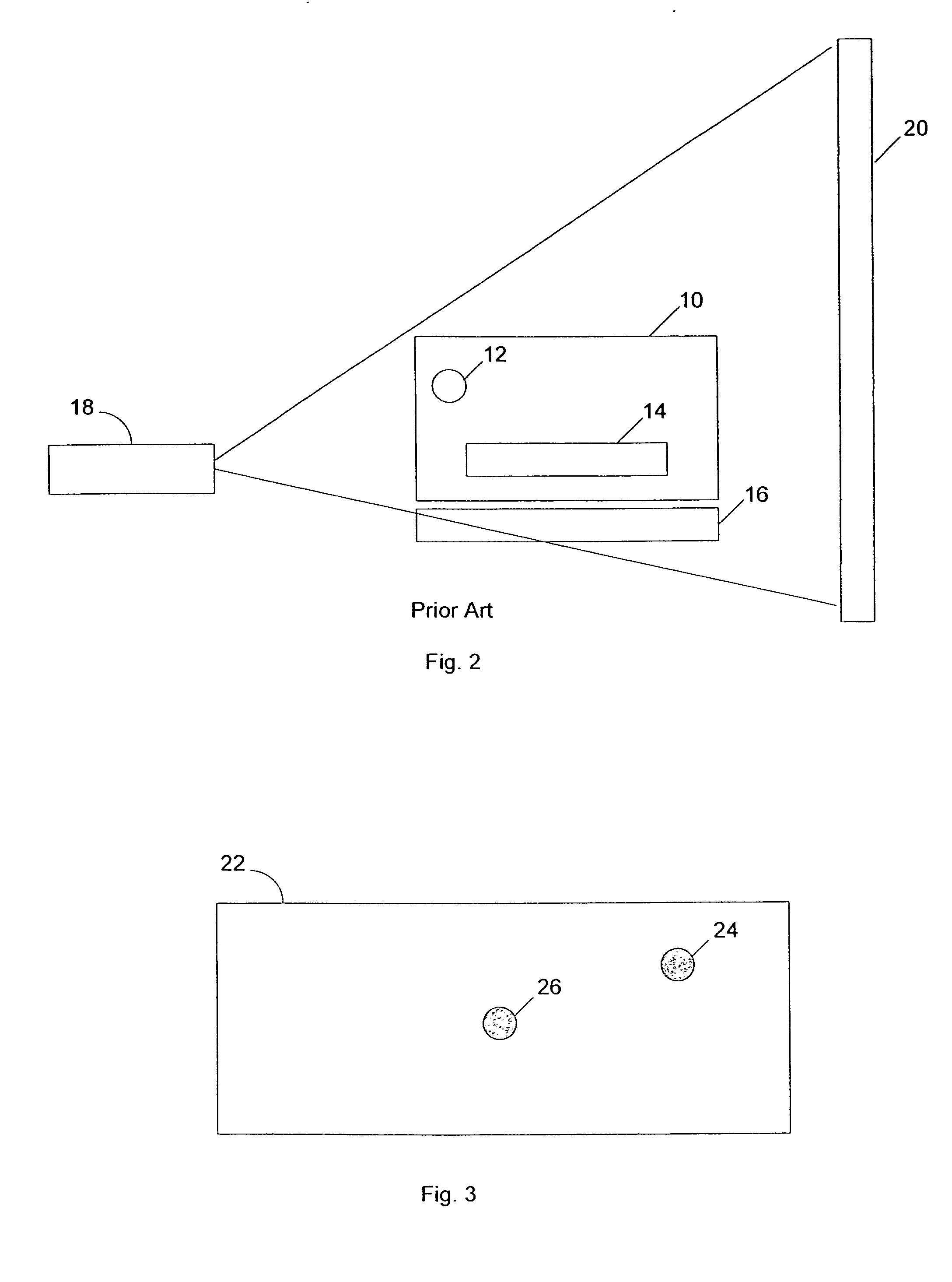Dual angle radiation scanning of objects
a radiation scanning and object technology, applied in the field of dual angle radiation scanning of objects, can solve the problems of false positives, unnecessary delays in the processing of many cargo conveyances, luggage,
- Summary
- Abstract
- Description
- Claims
- Application Information
AI Technical Summary
Benefits of technology
Problems solved by technology
Method used
Image
Examples
Embodiment Construction
[0034]FIG. 1 is a perspective view of an example of an object 10, such as a rectangular cargo conveyance, containing a sphere 12 of a high density SNM, such as uranium-233 (density of about 20 g / cm3) and a solid pipe 14 of a moderate density material, such as iron (density of about 8 g / cm3), for example, moving through an example of an X-ray scanning system. The object 10 is on a conveyor 16, moving to the right, as indicated by arrow A. FIG. 2 is a front view of the object 10 on the conveyor 16, also showing a radiation source 18 and a detector 20. FIG. 3 is an example of an X-ray image 22 resulting from radiation scanning of the object 10, including the sphere 12 of high density material, indicated by a high density region 24, and the iron pipe 14, indicated by a high density region 26. In this example, the pipe 14 has a length such that the radiation attenuation caused by the pipe is comparable to the attenuation caused by the sphere 12 of uranium. The two regions 24, 26 are ther...
PUM
 Login to View More
Login to View More Abstract
Description
Claims
Application Information
 Login to View More
Login to View More - R&D
- Intellectual Property
- Life Sciences
- Materials
- Tech Scout
- Unparalleled Data Quality
- Higher Quality Content
- 60% Fewer Hallucinations
Browse by: Latest US Patents, China's latest patents, Technical Efficacy Thesaurus, Application Domain, Technology Topic, Popular Technical Reports.
© 2025 PatSnap. All rights reserved.Legal|Privacy policy|Modern Slavery Act Transparency Statement|Sitemap|About US| Contact US: help@patsnap.com



